6 Rules Every Golfer Forgets!
Our qualified rules expert clarifies six often forgotten golf rules, covering everything from red penalty areas to abnormal ground conditions...
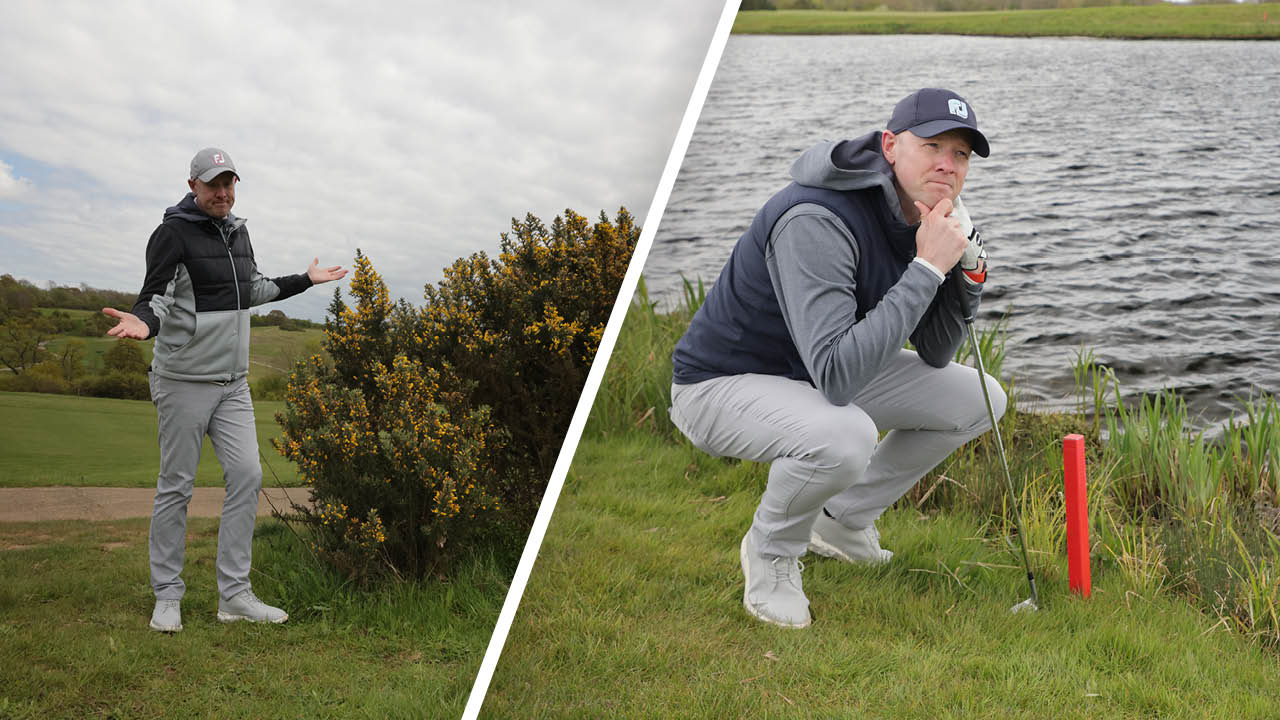

The rules of golf can be a daunting topic for amateur golfers, with knowledge of the subject ranging drastically from one player to the next. While many club members will feel they have a firm grasp of the laws, there are some rules that are easy to get wrong.
In this video and article, Golf Monthly's qualified rules expert Fergus Bisset shares six rules that every golfer forgets and clarifies everything you need to know in order to play with confidence on the course...
6 Rules Every Golfer Forgets!
1. Teeing Off At Your Allotted Time
Imagine the scene. You've woken up full of excitement about teeing it up in your first competition of the season, the sun is shining and you are on your way to the course. As you arrive, you realise you are a bit early but the weather is glorious and the first fairway appears to be clear.
Your tee time is set at 9.30am, but you step onto the tee at 9.26am with the intention of heading out a few minutes early. What some golfers won't realise, however, is that the rules around the time that you can tee off (in relation to your slot) are quite strict.

Be sure to tee off on time, not early or late as this will incur a penalty
Rule 5.3a states that players must tee off at their allocated tee time, not before or after. If a player tees off no more than five minutes early, this should result in a general penalty of two strokes. The same rules apply for any player teeing off up to five minutes late of their allotted slot.
Rule 5.3a also states that teeing off more than five minutes before or after your allotted tee time should actually result in a disqualification from the competition, but there are some caveats to the rule.
If the committee decides there are exceptional circumstances preventing a player or players teeing off at their allocated time, then there is no breach or penalty awarded. You also shouldn't be penalised if you are present on the tee at your start time, but you are prevented from starting due to other factors such as slow play ahead or weather conditions.
Subscribe to the Golf Monthly newsletter to stay up to date with all the latest tour news, equipment news, reviews, head-to-heads and buyer’s guides from our team of experienced experts.
2. Hitting A Provisional Ball
So, you have safely navigated the first few holes, but as you tee off on the fifth you hook it left towards the trouble. In this situation, if the location of their ball is unknown, most players would opt to 'hit another one'.
It's important to note, that while the practice here is correct, the way in which you announce your intention is very important.

Declare a provisional ball clearly before playing your shot
Rule18.3b states that if you decide to hit a provisional ball, you must clearly indicate that you are going to do so. Simply stating that you are going to 'hit another one' is not enough, as you will then be expected to play that ball as three off the tee, and instead you should use the word 'provisional' before taking the next shot from the tee.
Technically, saying things like 'I will hit another one, just in case' would suffice, but best practice would be to use the term provisional ball and state your intentions clearly.
3. Hitting From Ground Under Repair (GUR)
After pausing at the halfway house for a welcome break and some light refreshment, you then head out on the back nine. A slightly stiff swing has seen you slice the ball way out to the right, where it has come to rest in an area of ground under repair (GUR).
Somehow you have drawn a fantastic lie in this area, so do you have to take relief or can you have a crack at it? Well, this is certainly a way that you can use the rules to your advantage...
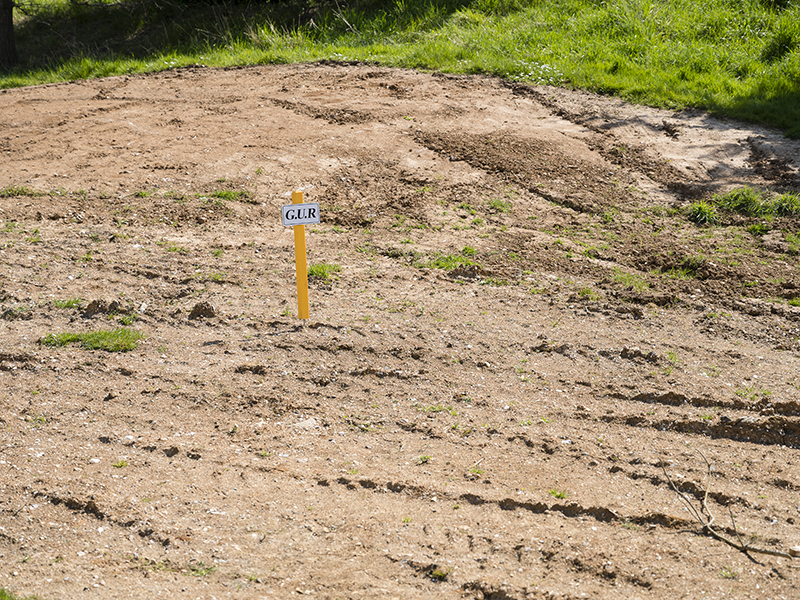
You are entitled to free relief from G.U.R, but you are welcome to play as the ball lies if you wish to do so
Under rule 16.1, you are entitled to relief from abnormal ground conditions, one of which being GUR, but there is nothing to stop you taking the shot on from its current position.
An exception to this rule, under rule 16.1f, would be if the committee had declared this area a 'no play zone'. In this scenario you must take relief.
4. Relief From An Immovable Obstruction
As you make your way through the middle of your back-nine, an errant second shot on the par-5 has left your ball tucked behind an immovable obstruction (see example in video above). But for those instantly expecting free relief, I might have some bad news for you.
Rule 16 states that you are entitled to free relief if the immovable obstruction impedes your swing, stance or lie. However, there is no relief available if this is clearly unreasonable.
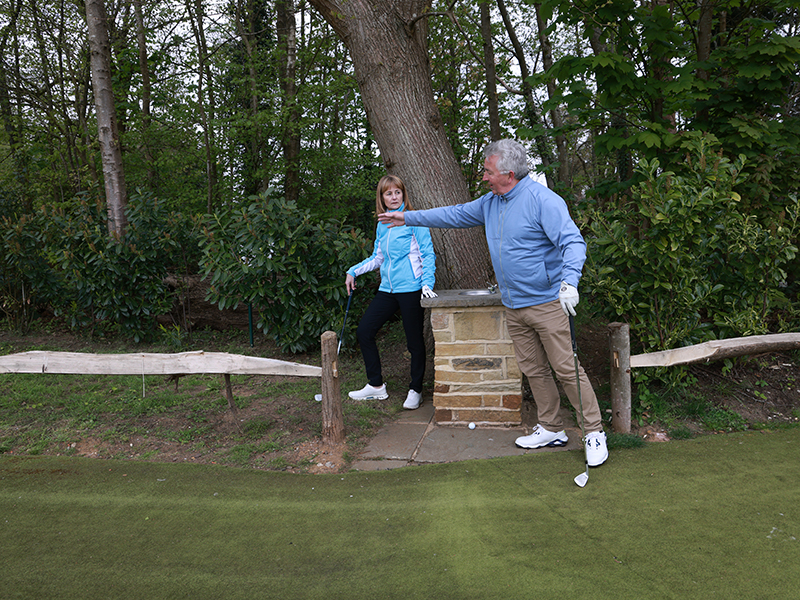
Free relief is given from immovable obstructions, but only if this is deemed reasonable
Say you had 100 yards remaining to the green, and you can make a swing without the immovable object impeding on your swing, stance or lie, using a club that you would typically use from that distance, then you would not be entitled to free relief.
If, however, you decided to suggest hitting driver was your intended play from 100 yards out, in order to make contact with the immovable object and get free relief, the referee/your playing partner is entitled to suggest that this is unreasonable.
5. Red Penalty Areas vs Yellow Penalty Areas
Following a series of wayward shots, frustration has set in and your drive down the 17th is hooking towards the water. The ball takes a couple of bounces as it skirts the bank and plops in the drink beyond the red stakes. So, what are your options?
First, it's important to understand the difference between red and yellow penalty areas. If this was a yellow penalty area you would have just two options, but as it's red you actually get three. The two options available for either are to go back to the tee to take stroke and distance relief and play again, or take back on the line relief - as explained in the video.
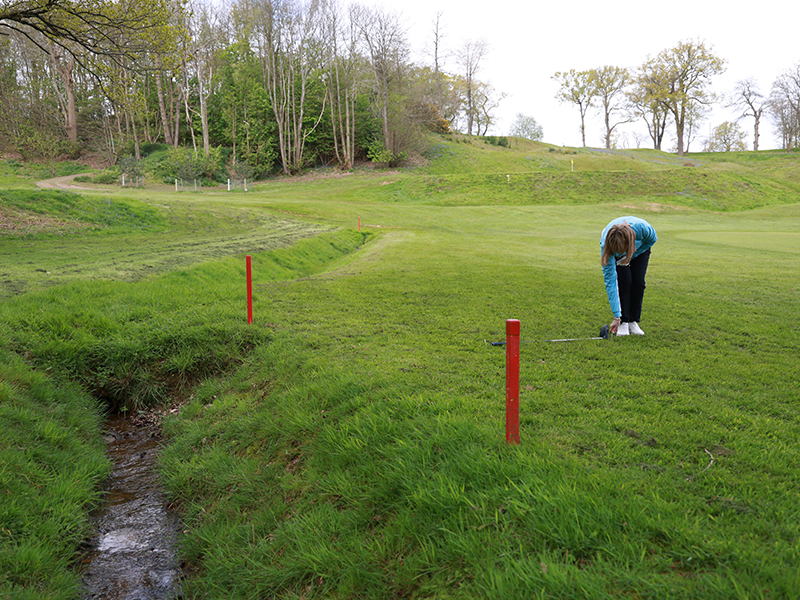
Two club lengths are permitted as relief from a red penalty area
For a red penalty area, you also have the option to take a two club length penalty drop from the point where the ball entered. Often this presents a better option than the other two, as the prospect of another shot over the water is the last thing you want having already fallen victim of its magnetism.
6. Nearest Point Of Relief
As you make your way up the 18th and towards the warm embrace of the clubhouse, your tee shot finds it way to rest on top of a sprinkler head right in the middle of the fairway.
The good news is that the sprinkler head is classed as an immovable obstruction, so you are entitled to free relief. This comes in the form of one club length from the nearest point of relief.
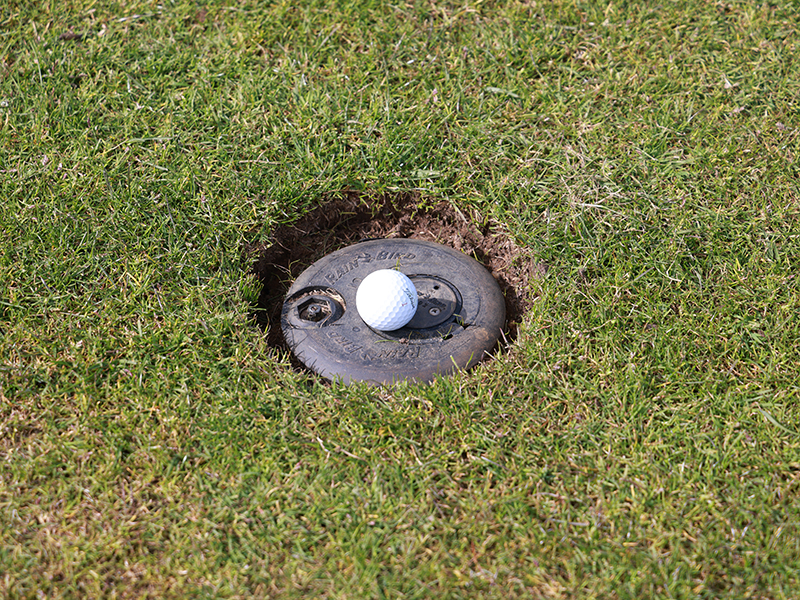
Free relief is given in the form of one club length from an immovable obstruction
Mark your nearest point of relief with a tee, and measure one club length before placing another tee in the ground to determine your relief area. An important point to note is that club length is defined as the longest club in your bag, but not including your putter.
You can't include your head cover, as this needs to be removed, and the club length is measured from the toe of the club to the butt of the grip (not including any extensions).

Fergus is Golf Monthly's resident expert on the history of the game and has written extensively on that subject. He has also worked with Golf Monthly to produce a podcast series. Called 18 Majors: The Golf History Show it offers new and in-depth perspectives on some of the most important moments in golf's long history. You can find all the details about it here.
He is a golf obsessive and 1-handicapper. Growing up in the North East of Scotland, golf runs through his veins and his passion for the sport was bolstered during his time at St Andrews university studying history. He went on to earn a post graduate diploma from the London School of Journalism. Fergus has worked for Golf Monthly since 2004 and has written two books on the game; "Great Golf Debates" together with Jezz Ellwood of Golf Monthly and the history section of "The Ultimate Golf Book" together with Neil Tappin , also of Golf Monthly.
Fergus once shanked a ball from just over Granny Clark's Wynd on the 18th of the Old Course that struck the St Andrews Golf Club and rebounded into the Valley of Sin, from where he saved par. Who says there's no golfing god?